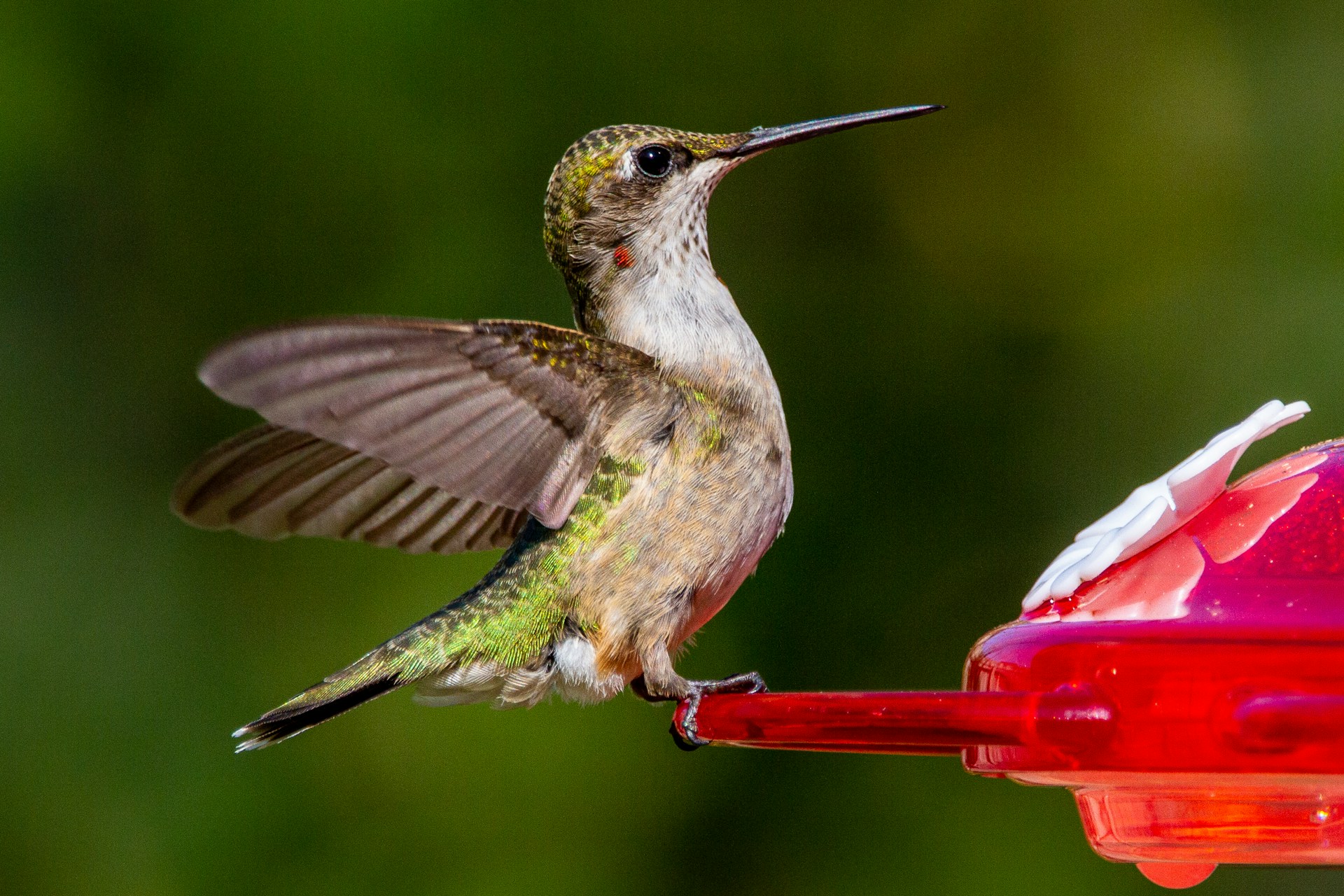Perfect Feeder Selection Tips for DIY Hummingbird Enthusiasts: Ensuring Happiness for Your Little Winged Friends
1. Introduction
Welcome to the enchanting world of hummingbird enthusiasts! These tiny marvels are a delight to observe, and offering them the right kind of feeder can make your backyard a lively hub for these mesmerizing birds. As outdoor enthusiasts based in the USA, it’s important to understand the significance of selecting the perfect feeder to ensure the well-being of your little winged friends. In addition to the right feeder, ongoing maintenance and providing fresh nectar are crucial components in attracting and sustaining a hummingbird population.
2. Types of Hummingbird Feeders
- Tube Feeders: These feeders are long, slim plastic tubes equipped with feeder holes and perches. Lightweight and economical, they mainly attract small songbirds like goldfinches and chickadees. Tube feeders protect seeds from the elements, though they require regular cleaning and maintenance to function effectively.
- Platform/Saucer Feeders: Platform feeders are renowned for their versatility and easy maintenance. They can accommodate a variety of bird feeds, including nutmeats, sunflower seeds, and fruits. Feature-rich designs include metal perforated bottoms for drainage, reducing waste and shell debris. Their open structure attracts a wide range of bird species while allowing easy accessibility for hummingbirds.
3. Key Tips for Feeder Selection
Starting with small feeders is integral to minimizing waste and ensuring cleanliness. As your hummingbird population grows, consider updating to larger feeders. Hummingbirds can display territorial behavior, thus multiple feeders can distribute the birds, reducing aggressive encounters.
- Start Small: Beginning with a small feeder ensures minimal waste and easier maintenance as you get accustomed to regular cleaning cycles.
- Adapt as Needed: Monitor visitor counts and update feeder sizes or add more feeders based on territorial hummingbird behaviors.
4. Safety and Maintenance Considerations
A clean feeder ensures hummingbirds receive safe nourishment, while strategic placement protects them from predators and insects.
- Keeping Feeders Clean: Understanding how to clean hummingbird feeders effectively is vital. Regular cleaning (twice a week in hot weather, weekly in cooler months) prevents mold and bacteria buildup.
- Predator Protection: Effective cat-proof hummingbird feeder placement tips include placing feeders 10-15 feet from cover, ensuring visibility but also providing an escape route.
- Using Ant Moats: Ant moats in feeders prevent ants from contaminating the nectar, providing a chemical-free solution to pest problems.
5. DIY Nectar Solutions: Pros and Cons
Homemade nectar is an economical and safe way to nourish hummingbirds without harmful additives.
Recipe for DIY Hummingbird Nectar: Mix 1 cup of white sugar with 4 cups of water. Boil the mixture, allow it to cool, and store any excess in the refrigerator. Avoid adding red food coloring, as it can be harmful.
- Benefits: Homemade nectar saves money and avoids unnecessary dyes or chemicals found in store-bought options. The standard recipe of 1 cup water to 1/4 cup sugar ensures a safe, nutritious mix.
- Cons: Regularly changing the nectar (every 2-3 days in hot weather, weekly in cooler weather) and cleaning the feeder can be labor-intensive.
6. Special Feeder Recommendations
Choosing easy-to-clean feeders and strategic placement ensures optimal feeding conditions.
- Aspects HummZinger HighView: This feeder is highly recommended for its ease of cleaning and satisfying dining experience for hummingbirds.
- Tube vs. Platform Feeders: While tube feeders are simple to use, platform feeders are easier to clean and less accessible to bees and wasps. Therefore, the benefits of platform feeders outweigh some of the challenges posed by tube feeders.
- Optimal Locations: Place feeders away from direct sunlight to prevent nectar spoilage and near sheltering plants for bird safety.
7. Common Mistakes to Avoid
Creating an optimal feeding environment involves avoiding common pitfalls:
- Inappropriate Sugar Types: Never use brown sugar, honey, or artificial sweeteners, as they can harm hummingbirds.
- Overfilling Feeders: Start with small amounts of nectar to prevent waste from rapid spoilage.
- Improper Placement: Avoid placing feeders in direct sunlight to slow down spoilage and overheating.
8. DIY Feeder Designs and Alternatives
Explore creative solutions using household items and experimenting with different designs for a tailor-made hummingbird experience.
- DIY Feeder Designs: Small spice containers can be repurposed into makeshift feeders, catering to your creative instincts and bird needs.
- Experiment With Designs: Trial various designs and household items to find what best suits your needs and attracts the most hummingbirds.
9. Enhancing Your Hummingbird Environment
Creating a nurturing environment involves more than just feeders.
- Plant Selection: Incorporate flowers that attract hummingbirds, such as trumpet vine, bee balm, and jewelweed.
- Inviting Space: Setting up multiple feeders reduces territorial disputes and creates a welcoming space for a thriving hummingbird community.
10. Conclusion
The joy of watching hummingbirds flit around your backyard is unparalleled. Ensuring you have the right feeder type, keeping it clean, providing fresh nectar, and strategically placing it can create an inviting space for these delightful creatures. Don’t be afraid to experiment with different feeders and setups to find what works best for your environment. With the right care and attention, your backyard can become a favored haven for hummingbirds, offering endless hours of enjoyment and a closer connection to nature.

